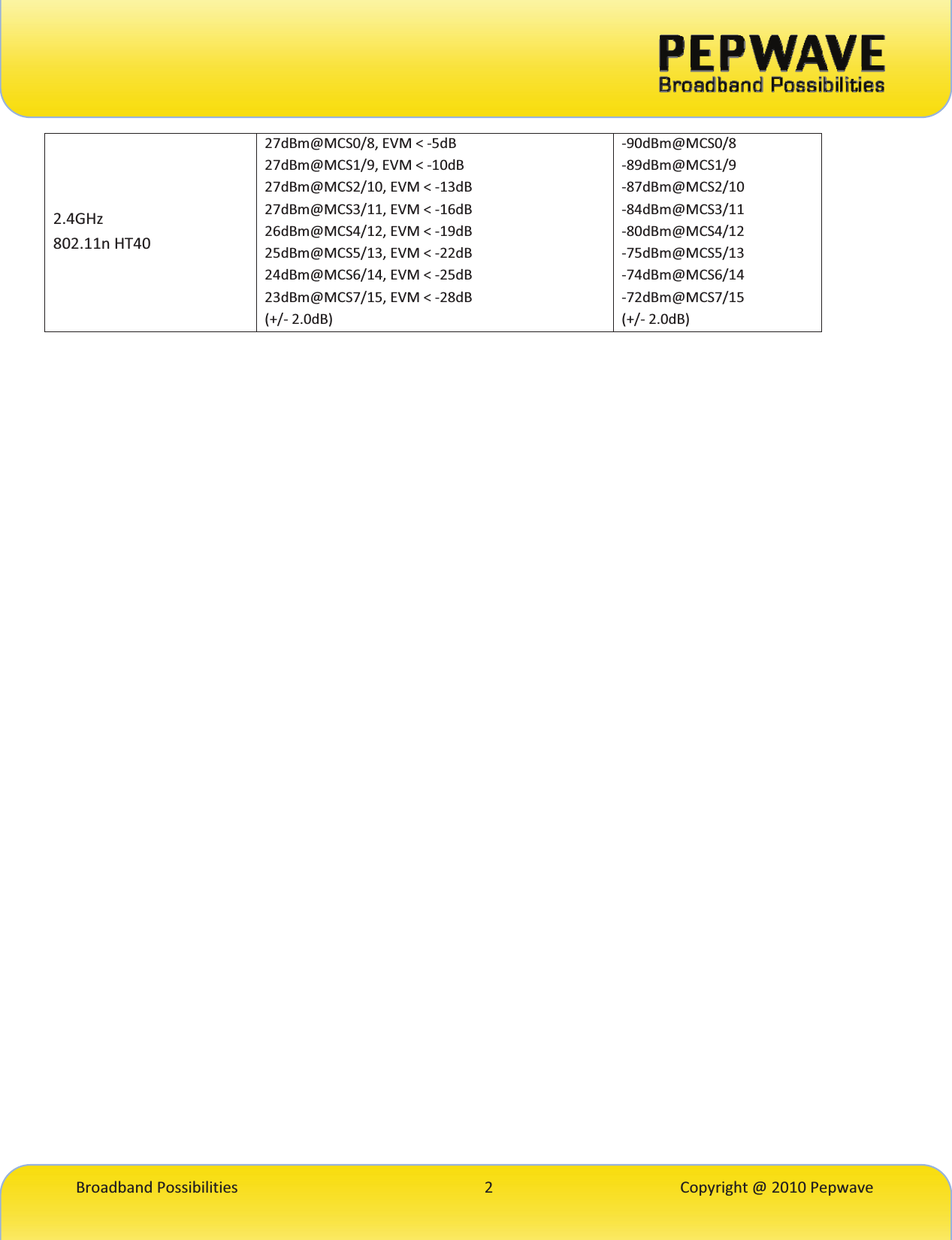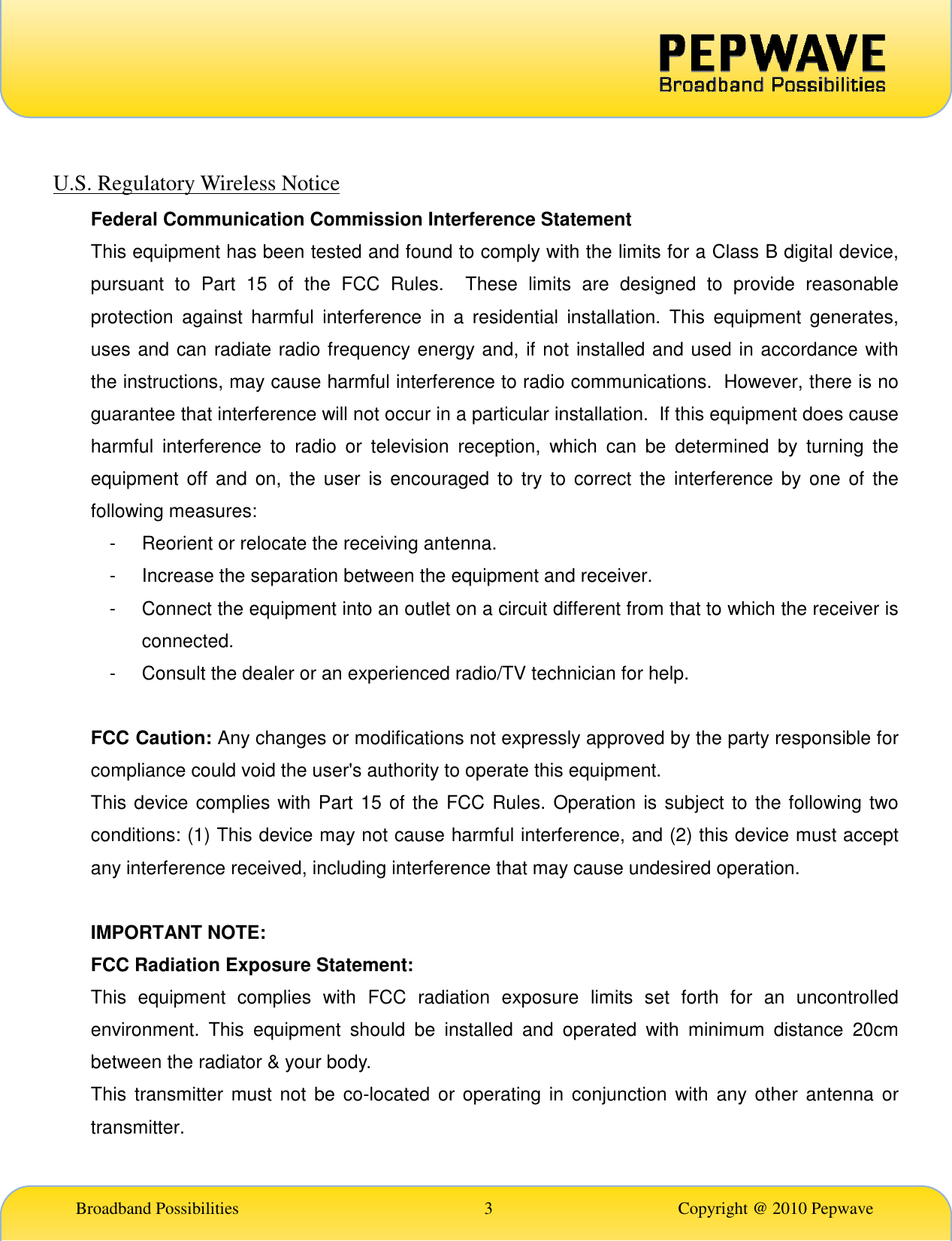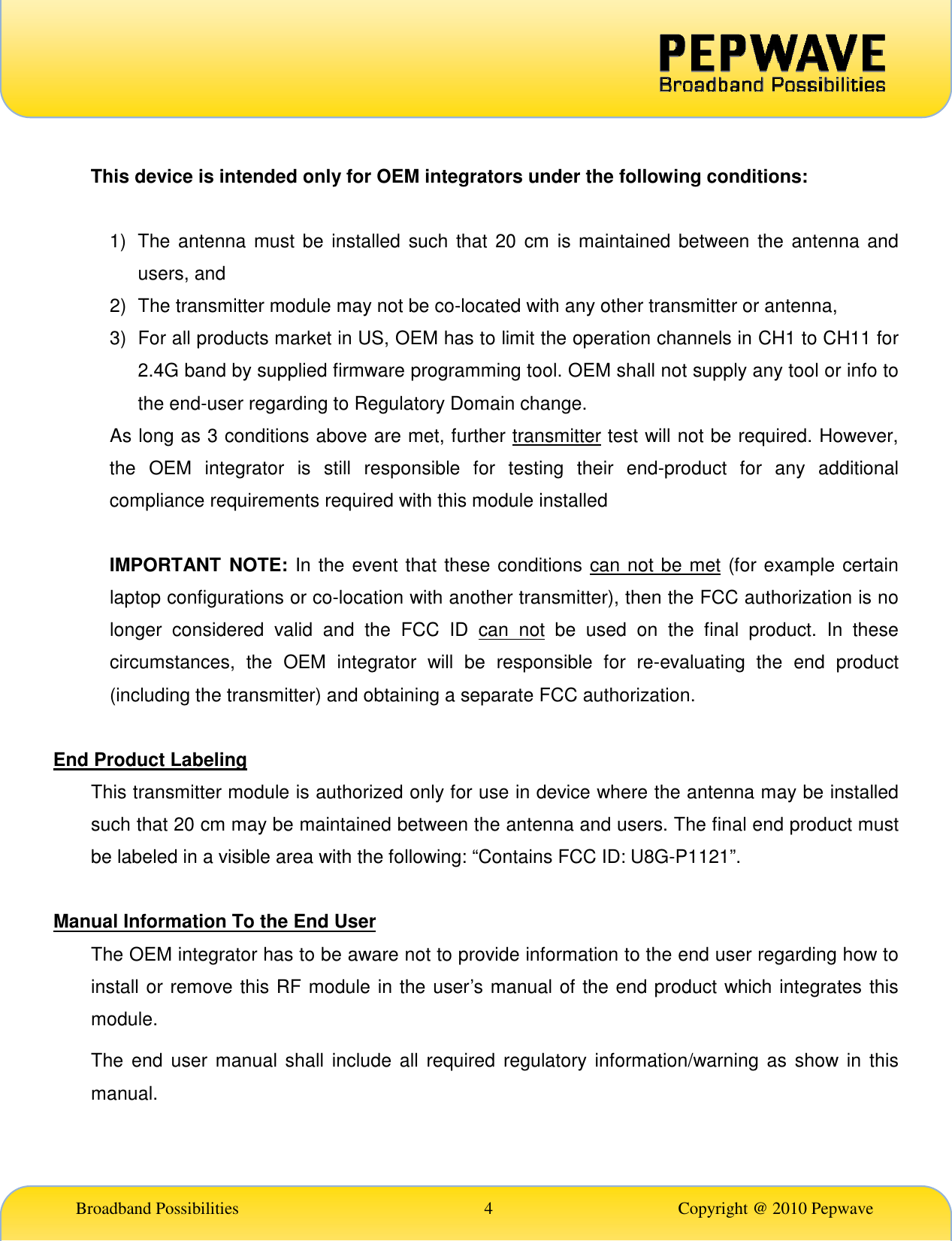Pismolabs Technology P1121 WLAN 802.11b/g/n Module User Manual N21 User s Manual with product spec 0
Pismo Labs Technology Limited WLAN 802.11b/g/n Module N21 User s Manual with product spec 0
Contents
- 1. UserMan_U8G-P1121
- 2. User manual-REV2
UserMan_U8G-P1121
![BroadbandPossibilities1Copyright@2010PepwavePismolabsNSeriesPismoN21miniͲPCIHighPower2x2802.11nMIMOIndustrialGradeOperatingTemperatureHardwareSpecificationCoreComponentWiͲFiChipsetAtherosAR9220Radio2x2MIMO802.11b/g/nInterface32ͲbitminiͲPCIMMCXConnector2OperationPowerConsumption54Mbps(4.8W),MCS0(4.8W),MCS15(6W)[ContinuousTXmode]Temperature Ͳ40ȗCto65ȗCHumidity15to95%FormFactor&MiscPCB80mmx60mmx1.0mmCertificationFCC,CE(100mWlimited),RoHSTransmitPower,EVMReceiveSensitivity802.11b/g27dBm@1Ͳ24Mbps,EVM<Ͳ16dB26dBm@36Mbps,EVM<Ͳ19dB25dBm@48Mbps,EVM<Ͳ22dB24dBm@54Mbps,EVM<Ͳ25dB(+/Ͳ2.0dB)Ͳ92dBm@1MbpsͲ89dBm@11MbpsͲ92dBm@6MbpsͲ88dBm@24MbpsͲ84dBm@36MbpsͲ80dBm@48MbpsͲ78dBm@54Mbps(+/Ͳ2.0dB)2.4GHz802.11nHT2027dBm@MCS0/8,EVM<Ͳ5dB27dBm@MCS1/9,EVM<Ͳ10dB27dBm@MCS2/10,EVM<Ͳ13dB27dBm@MCS3/11,EVM<Ͳ16dB26dBm@MCS4/12,EVM<Ͳ19dB25dBm@MCS5/13,EVM<Ͳ22dB24dBm@MCS6/14,EVM<Ͳ25dB23dBm@MCS7/15,EVM<Ͳ28dB(+/Ͳ2.0dB)Ͳ93dBm@MCS0/8Ͳ92dBm@MCS1/9Ͳ90dBm@MCS2/10Ͳ86dBm@MCS3/11Ͳ83dBm@MCS4/12Ͳ78dBm@MCS5/13Ͳ77dBm@MCS6/14Ͳ75dBm@MCS7/15(+/Ͳ2.0dB)RadioSpecification](https://usermanual.wiki/Pismolabs-Technology/P1121.UserMan-U8G-P1121/User-Guide-1508558-Page-1.png)


